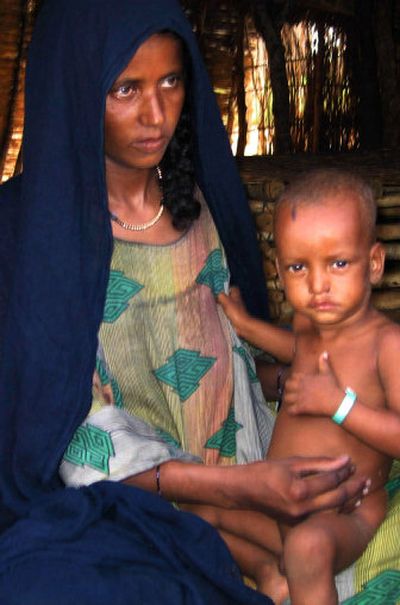Mali’s hunger appeal going unanswered

MARSI, Mali – While the world’s attention has been fixed on famished Niger, Sidi Mohammed’s big, tearful eyes and cries of hunger reveal another food crisis unfolding next door.
The year-old baby, mewling as his mother tries to feed him a cup of vitamin-rich gruel provided by aid workers, is one of an estimated 1.5 million of Mali’s 11 million people said to be facing hunger, among them an estimated 144,000 children already suffering malnourishment.
Aid workers say they fear a replay of what happened in neighboring Niger, where the world ignored repeated warnings and only rushed in aid in recent weeks when images of starving children hit TV screens.
The U.N. World Food Program said an appeal for $7.5 million was facing a shortfall of 85 percent, which it called “devastating.”
A similar appeal for Niger got 70 percent of the $16 million sought, mostly from Australia, Germany and the United States. But that was at least seven months after the first calls for help went out for the entire region.
Across the chronically dry and dusty West African region on the edge of the Sahara, malnutrition is a yearly blight. Poor rains and locusts worsened the situation last year, and now Sidi and his three siblings are dangerously underfed and dependent on food aid. Burkina Faso and Mauritania also are affected.
The shortages that have struck northeastern Mali aren’t thought to be as bad as Niger’s – yet. The U.N.’s World Food Program said on July 28 that 5,000 children in the north were suffering acute malnutrition after last year’s farm output fell 42 percent from 2003’s.
Relief workers say the crisis is unfolding deep in Mali’s dusty bush, where seminomadic Fulani, Tuareg and Tamachek people tend their flocks.
“The TV cameras whose horrific images of hunger in Niger caught the international community’s attention have not yet reached the affected areas of Mali,” the World Food Program said.
Mali’s government made its own appeal in May and also started doling out free food to partially cover a shortfall of 347,000 tons of grains and other crops. But it says it still needs 5,000 tons of enriched foodstuffs for very young children – always the first and worst hit.
Things are always difficult at this time of year, but after last year’s drought and locusts, “it’s a particularly, particularly difficult moment,” Lansry Nana Yaya Haidara, Mali’s minister for food security, said in her office in the capital, Bamako.
“If there’s a forgotten crisis, it’s here,” said Patricia Hoorelbeke of Action Contre la Faim, the French-based charity that fed Sidi Mohammed. “Here you always have a problem, but this year it’s three or four times worse.”